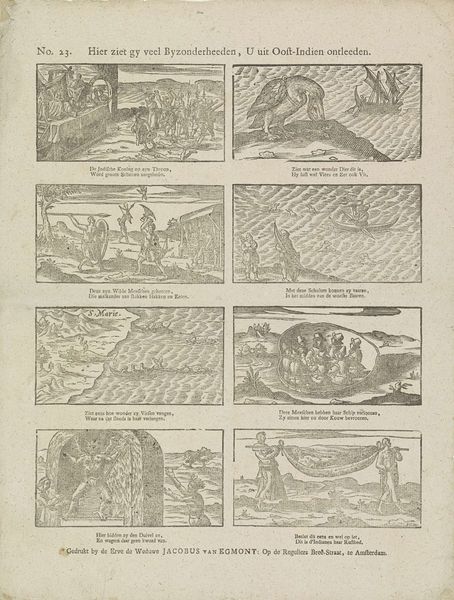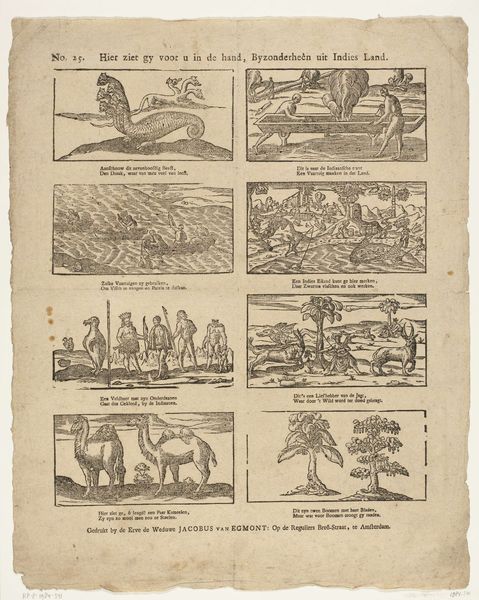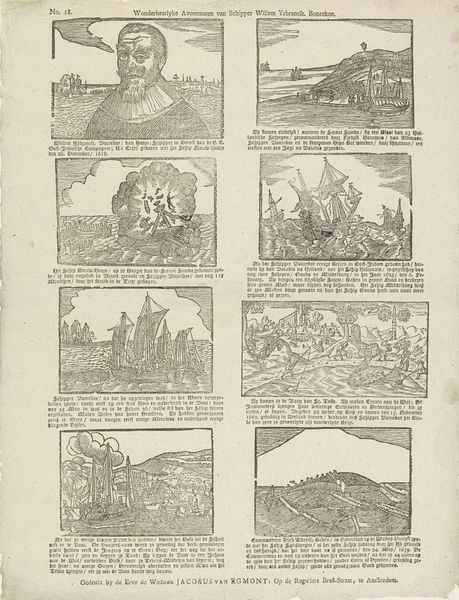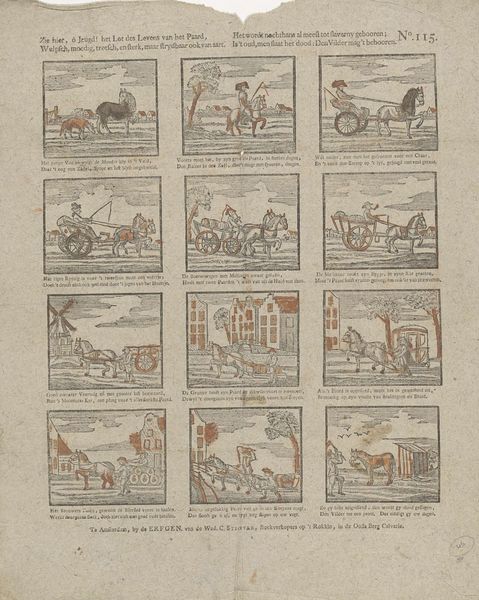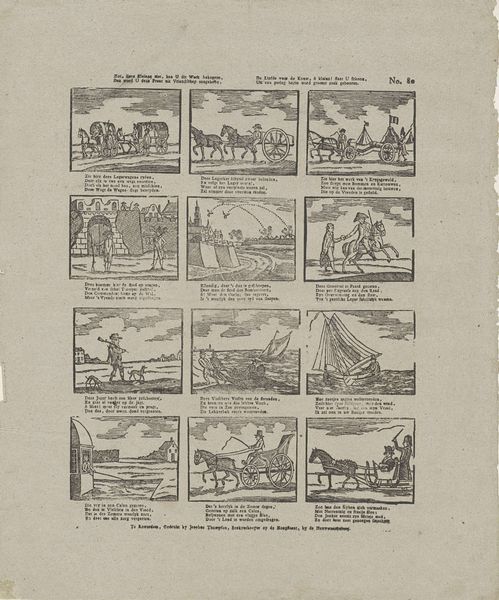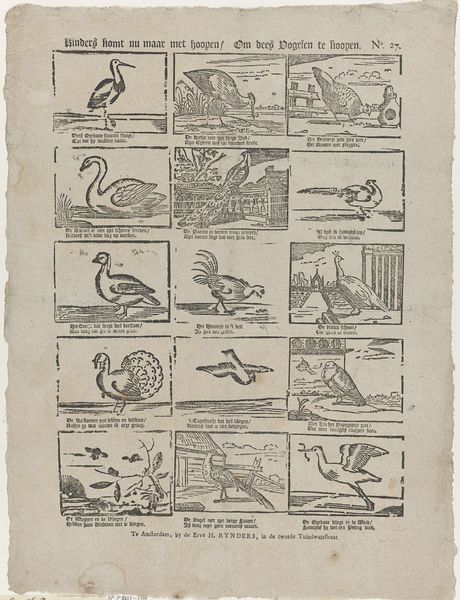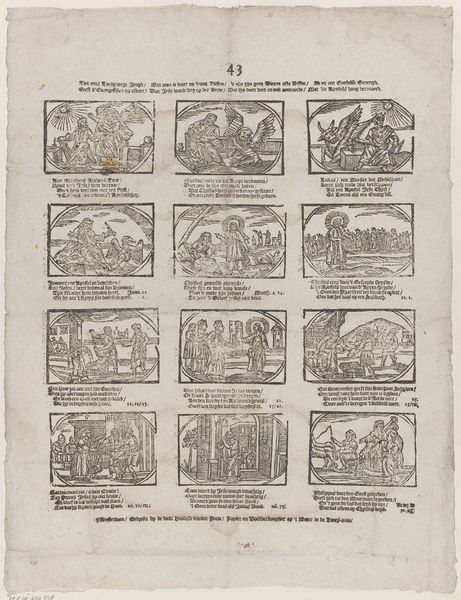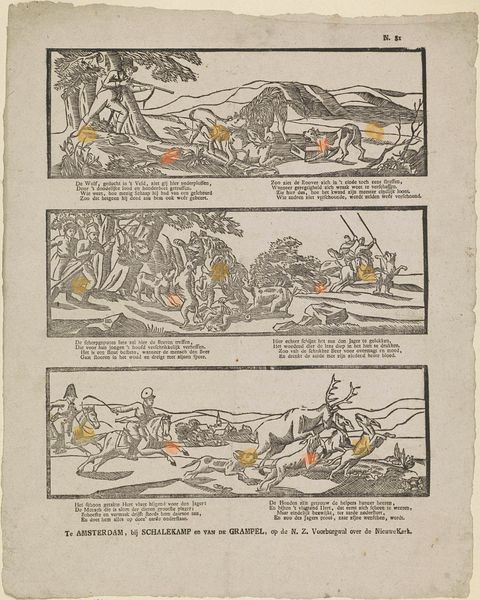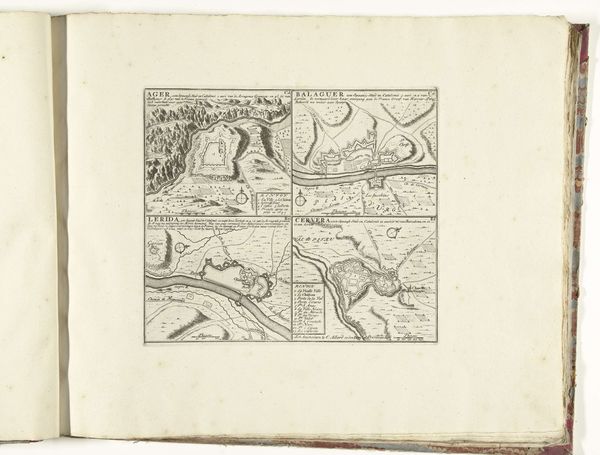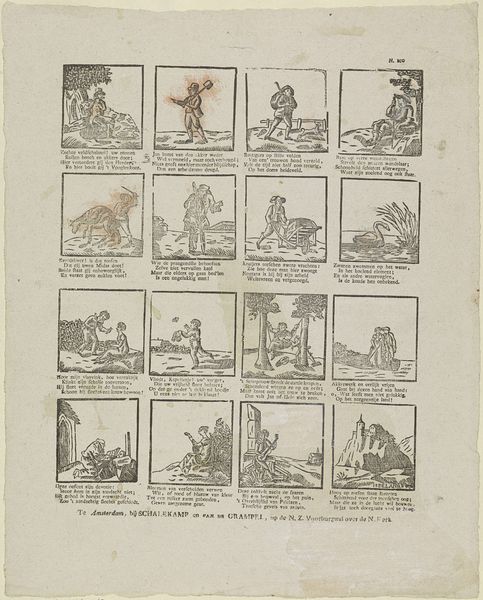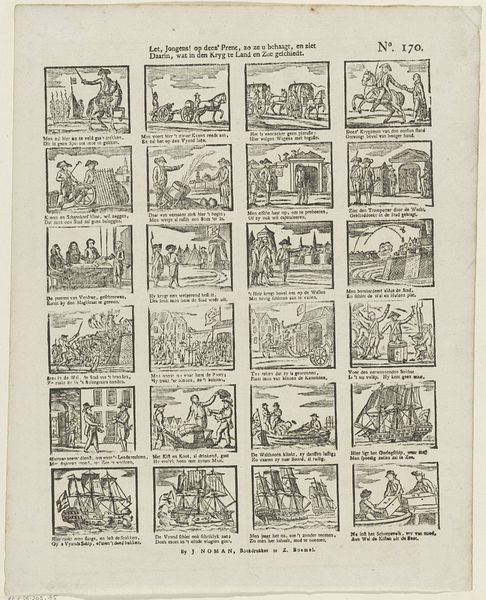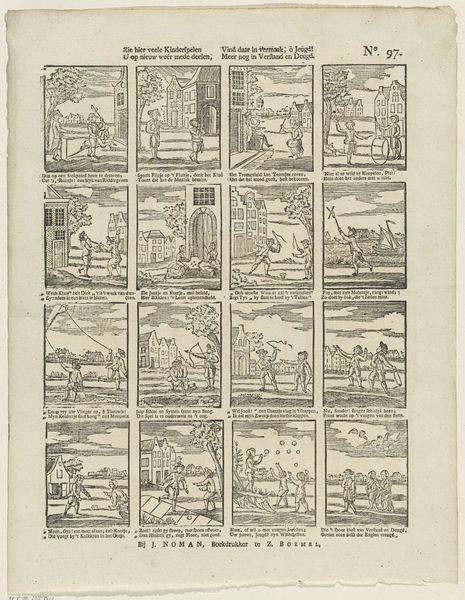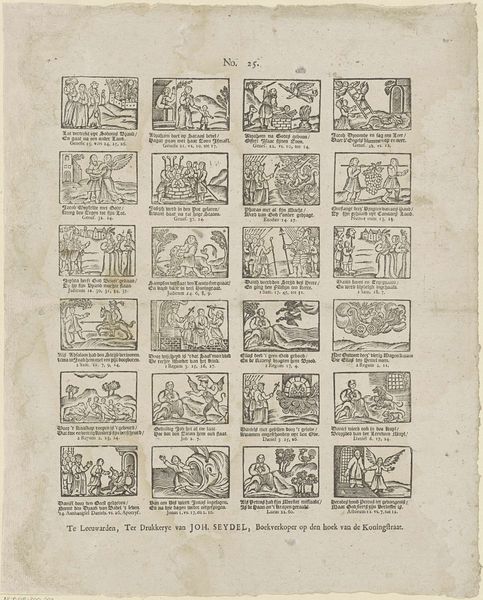![Al weer wat nieuws en kijkens waerdig / Loond men een yder om te zien [(...)] by Erven Hendrik van der Putte](/_next/image?url=https%3A%2F%2Fd2w8kbdekdi1gv.cloudfront.net%2FeyJidWNrZXQiOiAiYXJ0ZXJhLWltYWdlcy1idWNrZXQiLCAia2V5IjogImFydHdvcmtzLzJkMjhmZDI2LWQyMWUtNDFjZi05OWQyLWNiNzI5YWNhNGQwNy8yZDI4ZmQyNi1kMjFlLTQxY2YtOTlkMi1jYjcyOWFjYTRkMDdfZnVsbC5qcGciLCAiZWRpdHMiOiB7InJlc2l6ZSI6IHsid2lkdGgiOiAxOTIwLCAiaGVpZ2h0IjogMTkyMCwgImZpdCI6ICJpbnNpZGUifX19&w=3840&q=75)
Al weer wat nieuws en kijkens waerdig / Loond men een yder om te zien [(...)] 1767 - 1793
0:00
0:00
Dimensions: height 394 mm, width 312 mm
Copyright: Rijks Museum: Open Domain
Curator: This striking print is entitled "Al weer wat nieuws en kijkens waerdig / Loond men een yder om te zien," dating from 1767-1793. Editor: Immediately, I'm struck by the sheer volume of information crammed into this single sheet. Each little square contains a fantastical creature, rendered in stark black and white. It’s quite unsettling, actually. Curator: Absolutely. It's from the Erven Hendrik van der Putte collection, a Dutch publisher who was tapping into the popular fascination with the natural world, and perhaps, colonial exploration. These are not strictly "real" animals. The accompanying text certainly lends to imaginative interpretations, given contemporary anxieties about exploration and the known world. Editor: Yes, the repetitive structure of boxes forces a kind of semiotic reading, almost like a bizarre alphabet. Each creature, its pose, the landscape around it, all contribute to a unique visual "word." It's quite ingenious, if a bit unnerving. Curator: The medium itself is fascinating. The sharp lines of the engraving process allowed for detailed, almost clinical, representations. Think about what these images communicate in their era and our own time regarding power structures inherent in our view of animals, race, and knowledge. Editor: Indeed. The starkness emphasizes the exotic "otherness" of these creatures, but I can also read a playfulness. The rigid grid is cleverly undermined by the whimsy of the depictions, it’s as though the artist wants us to analyze but enjoy. Curator: Precisely! Considering this was made during a period of increasing European contact with previously unknown species, this image then becomes a commentary on classification itself, challenging notions of taxonomy and representation. The politics of display are undeniable, setting up parameters of seeing versus being seen. Editor: The repetition of the images themselves becomes almost rhythmic— a formal element creating an intriguing visual experience that resonates despite its archaic subject matter. Curator: Ultimately, the artwork acts as a crucial lens through which we may see both a desire for knowledge and the dangers inherent in the process of trying to define the Other. Editor: I can see it both as a systematic exercise in semiotics and a potent piece of visual rhetoric from an unsettling moment of colonialism.
Comments
No comments
Be the first to comment and join the conversation on the ultimate creative platform.
